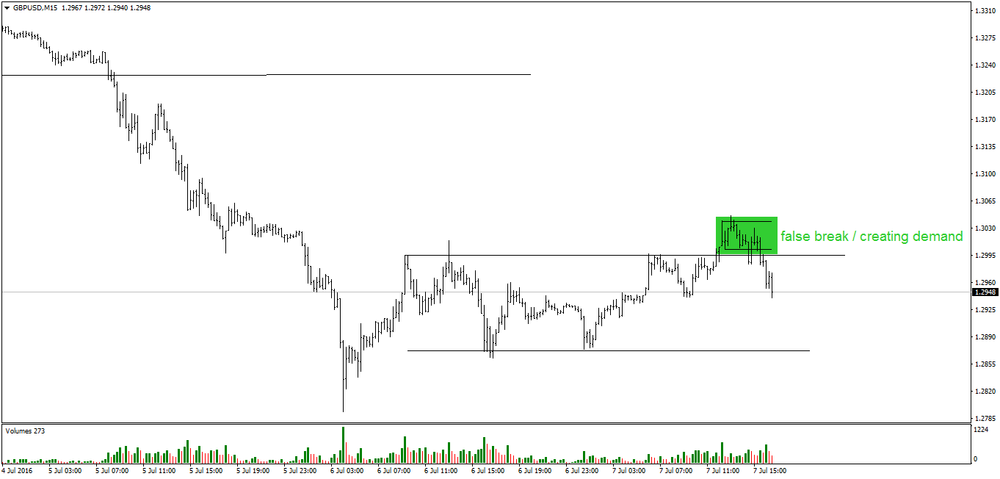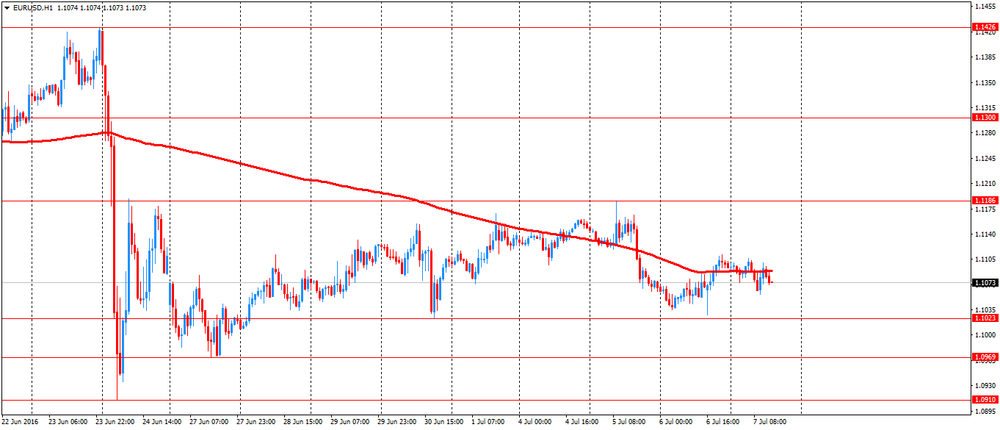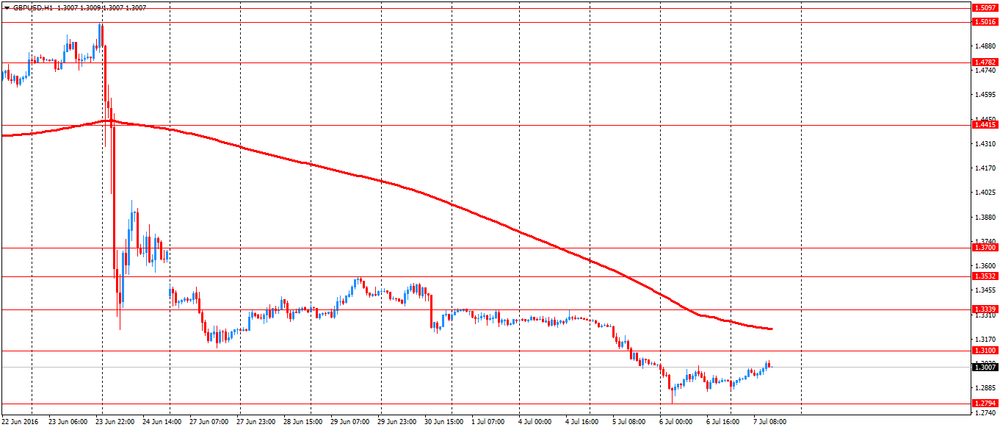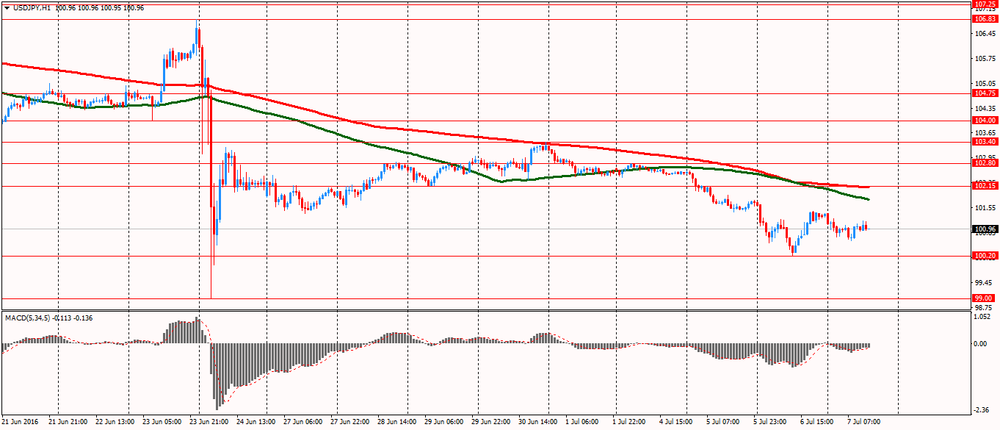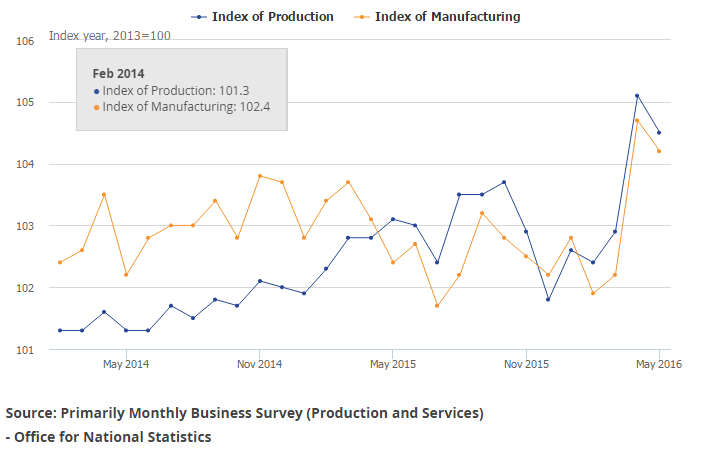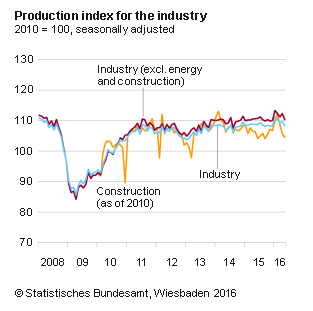Noticias del mercado
-
23:57
Schedule for today, Friday, Jul 08’2016:
(time / country / index / period / previous value / forecast)
01:30 Japan Labor Cash Earnings, YoY May 0.3%
05:00 Japan Eco Watchers Survey: Current June 43.0 42.9
05:00 Japan Eco Watchers Survey: Outlook June 47.3
05:45 Switzerland Unemployment Rate (non s.a.) June 3.3% 3.3%
06:00 Germany Current Account May 28.8
06:00 Germany Trade Balance (non s.a.), bln May 25.6
06:45 France Industrial Production, m/m May 1.2% -0.5%
08:30 United Kingdom Total Trade Balance May -3.294
12:30 Canada Unemployment rate June 6.9% 7%
12:30 Canada Employment June 13.8 5
12:30 U.S. Average workweek June 34.4 34.4
12:30 U.S. Average hourly earnings June 0.2% 0.2%
12:30 U.S. Unemployment Rate June 4.7% 4.8%
12:30 U.S. Nonfarm Payrolls June 38 175
19:00 U.S. Consumer Credit May 13.42 16
-
17:09
Still selling AUD, target 0.67 - BNP
"The S&P have cut Australia's sovereign outlook to negative from stable (while affirming the AAA rating), citing persistent budget deficits. We are bearish on the AUD and target a move to 0.67 by year-end in AUDUSD.
The current fragile risk environment should not be supportive for G10 commodity exporter currencies. Furthermore, our economists expect the RBA to cut rates by 25bp at their next meeting on 2 August, a view now 60% priced into rates markets. The key policy consideration for the RBA is likely that inflationary pressures remain soft and we think Q2 CPI data (released 27 June) is will print in line with the RBA's 1.0% y/y forecast which would be enough to prompt a rate cut
Our medium-term forecasting model BNP Paribas CLEER™ also signals downside in AUDUSD below 70 cents this year".
-
17:00
U.S.: Crude Oil Inventories, July -2.223 (forecast -2.5)
-
16:40
-
16:34
The UK economy is moving to slowdown in the second quarter after rising - NIESR
The UK economy seems to show a significant slowdown after a strong second quarter, said NIESR, based on data obtained mainly before voters decided last month to leave the European Union.
Warning from the National Institute of Economic and Social Research (NIESR) comes from some of the early signs that businesses and consumers can suffer from the uncertainty created by the June 23 referendum.
NIESR estimated the UK economy grew by 0.6 percent in the second quarter, compared with an increase of 0.4 percent in the first three months of the year.
But NIESR warned that the acceleration was due to a sharp increase in activity in April, adding that gross domestic product is likely to remain at the same level in May and in June decline.
-
16:07
United Kingdom: NIESR GDP Estimate, Quarter II 0.6%
-
16:00
Canada: Ivey Purchasing Managers Index, June 51.7 (forecast 51)
-
15:46
Option expiries for today's 10:00 ET NY cut
USD/JPY 99.00, 100 (710m),102.00/05 (585m), 102.40, 102.50, 102.70/75,103.00, 103.20,104.00, 104.80 (511m),105.00 (760m)
GBP/USD 1.2500 (626m),1.3000 (1bn),1.3500 (987m)
AUD/USD 0.7200, 0.7250, 0.7265/65,0.7300 (402m), 0.7350, 0.7375,0.7440/45/50 (730m), 0.7458/60, 0.7470/75/80,0.7500, 0.7535, 0.7585,0.7600, 0.7610 (541m),0.7700 (558m)
NZD/USD 0.6965,0.7010,0.7104/05/06, 0.7140, 0.7150, 0.7175
AUD/JPY 74.50 (550m)
USD/CAD 1.2750/55,1.2775,1.2800, 1.2875/80,1.3000, 1.3020,1.3100, 1.3140, 1.3180,1.3300
EUR/GBP 0.8250, 0.8280,0.8340,0.8500 (400m)
-
14:55
US: initial unemployment claims continue to drop
In the week ending July 2, the advance figure for seasonally adjusted initial claims was 254,000, a decrease of 16,000 from the previous week's revised level. The previous week's level was revised up by 2,000 from 268,000 to 270,000. The 4-week moving average was 264,750, a decrease of 2,500 from the previous week's revised average. The previous week's average was revised up by 500 from 266,750 to 267,250. There were no special factors impacting this week's initial claims. This marks 70 consecutive weeks of initial claims below 300,000, the longest streak since 1973.
-
14:45
Canadian building permits dowm 1.9%
Municipalities issued building permits worth $6.8 billion in May, down 1.9% from the previous month. Lower construction intentions for commercial buildings in Quebec and Ontario and single-family homes in Ontario contributed most to the decrease.
The value of non-residential permits fell 3.3% to $2.5 billion in May, following a 1.9% increase in April. The decrease resulted mainly from lower construction intentions for commercial structures.
In the residential sector, the value of building permits was down 1.1% to $4.3 billion, following a 0.9% drop the previous month. The increase in the value of multi-family dwelling permits was not sufficient to offset the decline for single-family dwellings. Decreases were posted in six provinces, led by Alberta.
-
14:43
European session review: pound rose
The following data was published:
(Time / country / index / period / previous value / forecast)
6:00 Germany Industrial Production (m / m) in May 0.5% Revised to 0.8% 0% -1.3%
France 6:45 Trade balance, bn May -5.2 -4.9 -2.8
7:15 Switzerland Consumer Price Index m / m in June 0.1% 0.1% 0.1%
7:15 Switzerland Consumer Price Index y / y in June -0.4% -0.5% -0.4%
7:30 UK House Price Index from Halifax, m / m in June from 0.9% Revised 0.6% 0.4% 1.3%
7:30 UK House Price Index from Halifax, 3m y / y in June 9.2% 7.7% 8.4%
8:30 UK Industrial Production m / m in May 2.1% Revised from 2% to 1% -0.5%
8:30 UK Industrial Production y / y in May from 2.2% Revised 1.6% 0.5% 1.4%
8:30 UK Manufacturing production m / m in May to 2.4% Revised 2.3% -1% -0.5%
8:30 UK Manufacturing production, y / y in May 0.8%
11:30 Eurozone ECB's report on the meeting dedicated to monetary policy
The pound rose from record lows against the US dollar after the release of positive manufacturing data in Great Britain, although concerns about Brexit consequences for the national economy continue to weigh.
The Office for National Statistics said that output in the UK manufacturing fell in May to a seasonally
The volume of industrial production decreased by 0.5 percent in May after the growth with 2.1 percent in April. It was the biggest drop in the past five months, but less than the expected decline of 1 percent.
In addition, manufacturing output fell by 0.5 percent, in contrast to an increase of 2.4 percent a month ago.
In annual terms, industrial production growth slowed to 1.4 percent in May, compared with 2.2 percent. Economists had forecast an increase of 0.5 percent.
Investors are now preparing for the meeting of the Bank of England next week, after the head of the central bank Governor Mark Carney signaled last week that it may take action during the summer, increasing expectations of the upcoming rate cut.
On Tuesday, the Bank of England warned of "representing the complexity of financial stability risks resulting after" Brexit and reduced requirements for the volume of capital reserves for banks.
Mark Carney said that this move implies "substantial changes" to help the economy to overcome the consequences of Britain leaving the EU.
At the same time, sentiment on the dollar slightly weakened after the June Fed meeting minutes released on Wednesday showed that officials of the US central bank decided that it is necessary to postpone the increase in interest rates, while evaluating British referendum consequences.
The minutes also stated that members of FOMC agreed to "reasonable wait for the new statistics before considering another rate hike".
Euro fell against the dollar after the release of weak data on industrial production in Germany. In May, industrial production in Germany fell by 1.3% compared with the previous month, according to the Ministry of Economics and Labour.
The decline os the index was the most significant since August 2014, on average the market is not expected to change. Industrial production decreased by 0.4% compared to May last year.
The April growth rate of industrial production in Germany was revised from 0.8% to 0.5% compared to March and from 1.2% to 0.8% in annual terms.
Construction output in May decreased by 0.9% compared with the previous month, the release of capital goods fell by 3.9%. Electricity generation increased by 3.9%, consumer goods production - by 0.5%.
EUR / USD: during the European session, the pair fell to $ 1.1056
GBP / USD: during the European session, the pair has risen to $ 1.3046
USD / JPY: during the European session, the pair fell to Y100.62 and then rose to Y101.19
-
14:30
U.S.: Initial Jobless Claims, 254 (forecast 270)
-
14:30
Canada: Building Permits (MoM) , May -1.9% (forecast 2%)
-
14:30
U.S.: Continuing Jobless Claims, June 2124 (forecast 2113)
-
14:25
ECB minutes: Brexit is "an important source of uncertainty" for eurozone
- Brexit can have significant negative consequences for the euro area economy
- The impact on the eurozone can manifest itself through trade and financial markets
- It is of great importance which assets will be purchased under the program of quantitative easing
- What does matter is the total amount of purchases of assets
- The composition of the bonds purchased by the ECB still has value for investors
- While there are no clear signs of an uptrend in core inflation
- Overall inflationary pressures remain weak
- We will closely monitor the inflation outlook
- ECB ready to take action and use all the tools, if necessary
-
14:21
US: more new jobs than expected - ADP
Private sector employment increased by 172,000 jobs from May to June according to the June ADP National Employment Report. Broadly distributed to the public each month the ADP National Employment Report is produced by the ADP Research Institute® in collaboration with Moody's Analytics. The report, which is derived from ADP's actual payroll data, measures the change in total nonfarm private employment each month on a seasonally-adjusted basis.
-
14:15
U.S.: ADP Employment Report, June 172 (forecast 159)
-
13:44
Orders
EUR/USD
Offers : 1.1200 1.1180 1.1150 1.1120/25 1.1100
Bids: 1.1050 1.1030 1.1000/10 1.0980 1.0950
GBP/USD
Offers : 1.3120 1.3100 1.3090 1.3080 1.3050 1.3030 1.3000
Bids: 1.2940 1.2920/25 1.2900/10 1.2870/75 1.2850 1.2800 1.2700
EUR/GBP
Offers : 0.8650 0.8625/30 0.8600 0.8580 0.8560
Bids: 0.8500 0.8475 0.8450 0.8400/10 0.8350
EUR/JPY
Offers : 113.50 113.00 112.80 112.50 112.30 112.00
Bids: 111.50 111.25/30 111.00/10 110.75 110.50 110.00
USD/JPY
Offers : 102.25 102.00 101.75/80 101.50 101.40 101.20/25 101.00/10
Bids: 100.60 100.50 100.40 100.20 100.00 99.80 99.50
AUD/USD
Offers : 0.7650 0.7600 0.7585/90 0.7550 0.7540 0.7530
Bids: 0.7480 0.7435 0.7420 0.7400 0.7350
-
13:22
Grece unemployment at 4 years low
Greece's unemployment rate dropped for a third straight month to its lowest level in more than four years, data from the Hellenic Statistical Authority showed Thursday.
The seasonally adjusted jobless rate fell to 23.3 percent from 23.7 percent in March, revised from 24.1 percent reported earlier. A year ago, the rate was 25.3 percent.
The latest figure was the lowest since March 2012, when it was 22.6 percent.
The number of unemployed dropped to 1.11 million from 1.13 million in the previous month. On a year-on-year basis, the jobless figure declined by 90,955 persons, or 7.5 percent.
Employment grew by 3 percent year-on-year and by 1.8 percent from the previous month.
The youth unemployment rate, which applies to the 15-24 age group, was 47.4 percent in Apirl versus 51.7 percent in the same month last year.
-
12:56
UK Foreign Secretary Philip Hammond cited by Reuters: the legal position is that it is up to the government to trigger article 50
- Parliament will be involved in Brexit process and will need to repeal legislation but decision of the public was clear.
-
11:40
Gbp/Usd range trading after better data. Offers are building
-
11:18
Conservative leadership candidate Andrea Leadsom: expects continued growth post-Brexit
-
Brexit forecasts of a disaster for sterling, equities and interest rates have not proven correct.
-
Weak pound means we may import less and buy more at home, which are good things for the economy.
-
Expects continued growth post-Brexit.
-
Financial sector has been boosted by Barclays and HSBC saying their plans are to stick with the UK.
-
-
11:06
Oil is gaining in early trading
This morning, New York crude oil futures WTI rose 0.51% to $ 47.69 per barrel and crude oil futures for Brent rose 0.43% to $ 49.02 per barrel. Thus, the black gold is rising, amid the release of data that show a decrease in US oil inventories and dollar weakness. According to the American Petroleum Institute, oil reserves fell 6.7 million barrels to 520.9 million over the week. Analysts said the US data on the reduction of oil reserves was the main cause of rising prices.
-
10:46
Review of financial and economic press: France surpassed Britain in the ranking of the largest economies in the world
newspaper. ru
S & P downgraded the credit rating of Australia
The rating agency Standart & Poors (S & P) downgraded the credit rating AAA of Australia from stable to negative, Bloomberg writes. "The negative outlook reflects our view hat without decisive policy action shortfall in the budget can be kept for several years. Current budget deficit may not be compatible with a high level of external debt and does not match the rating AAA », - explained S & P.
ECB threatened Slovenia with a lawsuit
The European Central Bank (ECB) said that it would go to legal action against the Slovenian authorities after police raided the country's central bank in Ljubljana and grabbed information belonging to the ECB, Reuters reported with reference to the ECB President Mario Draghi.
German Finance Ministry: British referendum has not yet affected the German economy
The outcome of the British referendum does not have a significant impact on the German economy, according to Finance Minister Wolfgang Schaeuble. He noted that "no significant changes have occurred", which is confirmed by the German regulator.
RBC
France surpassed Britain in the ranking of the largest economies in the world
After another weakening of the pound sterling France surpassed the UK in the ranking of the largest economies of the world according to Reuters. Both countries in turn occupy the fifth place, depending on the exchange rate
-
10:33
UK industrial production in May better than forecasts
Total production output is estimated to have increased by 1.4% in May 2016 compared with May 2015. There were increases in 3 of the 4 main sectors, with the largest contribution coming from manufacturing (the largest component of production), which increased by 1.7%.
The largest contribution to the increase in manufacturing came from the manufacture of transport equipment, which increased by 6.6%.
Total production output is estimated to have decreased by 0.5% in May 2016 compared with April 2016. There were decreases in 3 of the 4 main sectors, with the largest downward movement coming from manufacturing, which decreased by 0.5% and contributed -0.3 percentage points to total production.
The largest contribution to the decrease in manufacturing came from the manufacture of basic pharmaceutical products & pharmaceutical preparations, which decreased by 6.5%, having increased in the previous month by 9.0%.
-
10:30
United Kingdom: Manufacturing Production (MoM) , May -0.5% (forecast -1%)
-
10:30
United Kingdom: Industrial Production (YoY), May 1.4% (forecast 0.5%)
-
10:30
United Kingdom: Industrial Production (MoM), May -0.5% (forecast -1%)
-
10:20
Option expiries for today's 10:00 ET NY cut
USD/JPY 99.00, 100 (710m),102.00/05 (585m), 102.40, 102.50, 102.70/75,103.00, 103.20,104.00, 104.80 (511m),105.00 (760m)
GBP/USD 1.2500 (626m),1.3000 (1bn),1.3500 (987m)
AUD/USD 0.7200, 0.7250, 0.7265/65,0.7300 (402m), 0.7350, 0.7375,0.7440/45/50 (730m), 0.7458/60, 0.7470/75/80,0.7500, 0.7535, 0.7585,0.7600, 0.7610 (541m),0.7700 (558m)
NZD/USD 0.6965,0.7010,0.7104/05/06, 0.7140, 0.7150, 0.7175
AUD/JPY 74.50 (550m)
USD/CAD 1.2750/55,1.2775,1.2800, 1.2875/80,1.3000, 1.3020,1.3100, 1.3140, 1.3180,1.3300
EUR/GBP 0.8250, 0.8280,0.8340,0.8500 (400m)
-
09:38
UK: house prices increased in June (data calculated before Brexit)
Prices in the three months to June were 8.4% higher than in the same three months of 2015
• House prices in the last three months (April-June) were 1.2% higher than in the preceding three months.
House prices in the three months to June were 1.2% higher than in the preceding three months (JanuaryMarch). This was slightly below May's 1.5% increase and was the lowest rise on this basis since December 2014 (1.0%).
• Prices in the three months to June were 8.4% higher than in the same three months a year earlier. This was down from 9.2% in May and was the lowest since July 2015 (7.8%).
• House prices increased by 1.3% between May and June. This followed a 0.9% rise in May. The month-on-month changes can be erratic and the quarter on quarter change is a more reliable indicator of the underlying trend.
Somewhat irelevant considering that Brexit was on june 24. The smart money will probably take advantage of the good news and increased demand for the pound to sell further.
-
09:31
United Kingdom: Halifax house price index 3m Y/Y, June 8.4% (forecast 7.7%)
-
09:31
United Kingdom: Halifax house price index, June 1.3% (forecast 0.4%)
-
09:27
Swiss CPI up 0.1% in June
The Swiss Consumer Price Index (CPI) increased by 0.1% in June 2016 compared with the previous month, reaching 100.7 points (December 2015=100). Inflation was -0.4% in comparison with the same month in the previous year. These are the findings of the Federal Statistical Office (FSO).
-
09:15
Switzerland: Consumer Price Index (YoY), June -0.4% (forecast -0.5%)
-
09:15
Switzerland: Consumer Price Index (MoM) , June 0.1% (forecast 0.1%)
-
08:45
France: Trade Balance, bln, May -2.8 (forecast -4.9)
-
08:42
Asian session review: the Australian dollar decreased
During the Asian session, the euro was trading almost unchanged against the US dollar on the eve of the release of important economic data on Friday. Experts note that the June data is likely to point to the relative strength of the US labor market after disappointing May report. According to forecasts, the number of people employed in non-agricultural sectors of the economy increased by 178.000, after rising a meager 38.000. In May. According to some analysts the employment report is unlikely to change the Fed's cautious plan for interest rates.
The yen strengthened slightly during the session following a statement by the head of the Bank of Japan Kuroda that the Bank of Japan will maintain the quantitative and qualitative easing of negative interest rates as long as is necessary to achieve a stable inflation rate of 2%. He also said that Japan's economy is expected to grow at a moderate pace, and the Japanese financial system remains stable.
The leading index, published by the Cabinet of Ministers of Japan and tracking the current state of the Japanese economy amounted to 110.5, lower than the previous value of 112.
The Bank of Japan lowered its quarterly report on the assessment of the 4 regions of consumption. Assessment of other regions remained unchanged
The Australian dollar fell after Standard & Poor's international rating agency (S & P) downgraded the long-term credit rating of Australia from "stable" to "negative." Australia keeps the AAA highest credit rating, but with a warning about a possible downgrade, if not taken effective measures to stabilize the budget.
According to Aozora Bank analysts, the loose monetary policy of the Fed has had a positive impact on commodity exporters, which include Australia, but slowing global growth.
Head of Treasury of Australia stated that the S & P decision points to the need to improve the budget situation, improvement of the budget can not be postponed and that the government has time to avoid the loss of the AAA rating.
Earlier, the index of activity in the construction sector in Australia has been published by HIA / AiG..
The index of activity in the construction sector of Australia HIA / AiG rose in June by 6.5 points to 53.2, after rising to 46.7 in May. This is the highest growth rate in 10 months.
The Australia Industry Group noted that national construction industry returned to growth in June. The rebound was driven by a solid rise in new orders, which returned to growth (above 50) for the first time in eight months. Also it became known, the construction of houses gained momentum to grow at the highest rate in the last 30 months. Engineering construction is growing for the second time in the last three months, though only slightly, while commercial construction activity rebounded in June after two months of decline. House builders were generally positive in assessing business conditions with reference to the improvement in new orders, the sustained support of the ongoing projects and activities of investors.
The New Zealand dollar appreciated strongly after the deputy head of the Reserve Bank of New Zealand Grant Spencer spoke about macroprudential policy and the risks associated with the housing market. Mr. Spencer said that against the backdrop of the current global environment, the RBNZ interest rates are likely to remain low for some time. He also added that it is necessary to balance concerns about financial stability. As for the housing market, Spencer said: "the longer the boom in the housing market, the higher the risk of a serious correction".
-
08:30
Bank of Japan Governor, Kuroda: Japan consumer inflation likely to be slightly negative or around 0% for time being
-
Japan's economy expected to expand moderately as a trend.
-
Japan consumer inflation likely to be slightly negative or around zero % for time being.
-
Japan's financial system maintaining stability.
-
BOJ will maintain QQE with negative rates for as long as needed to achieve 2% inflation in stable manner.
-
BOJ will take additional easing steps via quantity, quality of asset buying and interest rates if needed.
-
-
08:29
Options levels on thursday, July 7, 2016:
EUR/USD
Resistance levels (open interest**, contracts)
$1.1260 (2917)
$1.1220 (3868)
$1.1164 (1463)
Price at time of writing this review: $1.1084
Support levels (open interest**, contracts):
$1.0992 (8680)
$1.0946 (5362)
$1.0898 (14343)
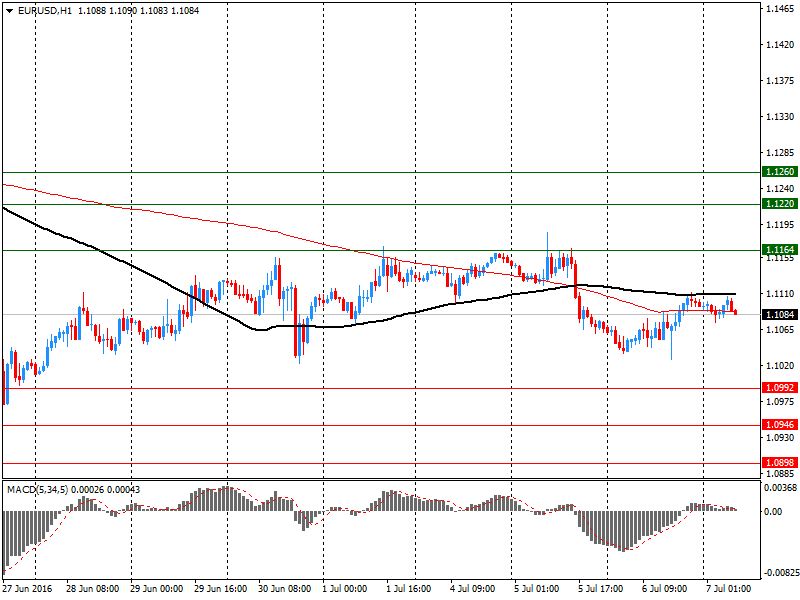
Comments:
- Overall open interest on the CALL options with the expiration date July, 8 is 44305 contracts, with the maximum number of contracts with strike price $1,1500 (5313);
- Overall open interest on the PUT options with the expiration date July, 8 is 86108 contracts, with the maximum number of contracts with strike price $1,0900 (14343);
- The ratio of PUT/CALL was 1.94 versus 2.04 from the previous trading day according to data from July, 6
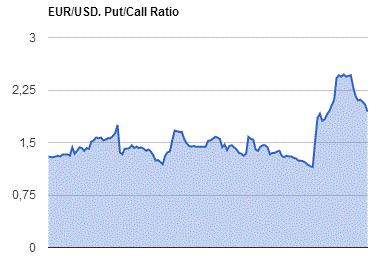
GBP/USD
Resistance levels (open interest**, contracts)
$1.3301 (480)
$1.3201 (1747)
$1.3102 (185)
Price at time of writing this review: $1.2979
Support levels (open interest**, contracts):
$1.2894 (314)
$1.2797 (499)
$1.2699 (269)
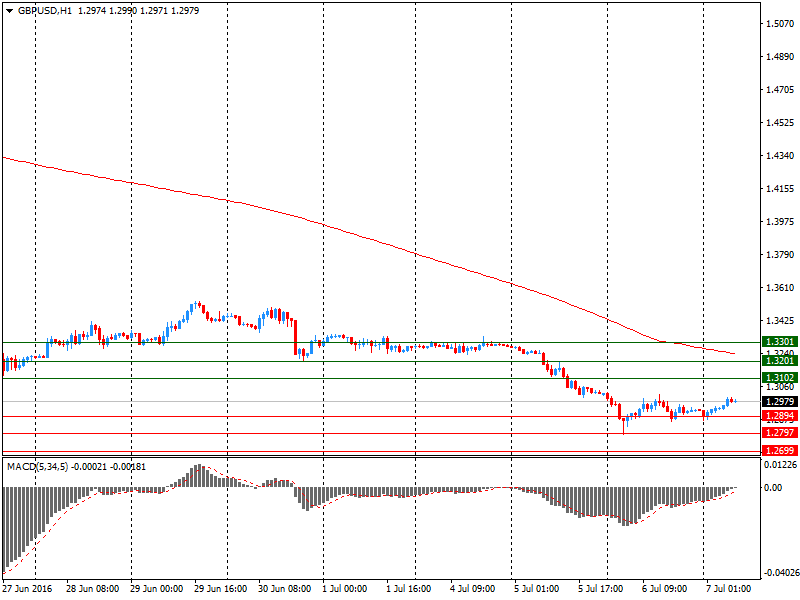
Comments:
- Overall open interest on the CALL options with the expiration date July, 8 is 37233 contracts, with the maximum number of contracts with strike price $1,5000 (4009);
- Overall open interest on the PUT options with the expiration date July, 8 is 44067 contracts, with the maximum number of contracts with strike price $1,3500 (4724);
- The ratio of PUT/CALL was 1.18 versus 1.24 from the previous trading day according to data from July, 6
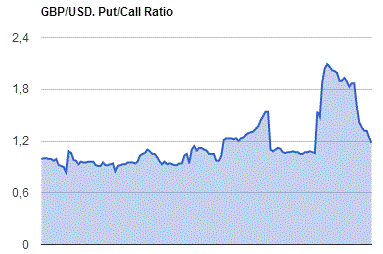
* - The Chicago Mercantile Exchange bulletin (CME) is used for the calculation.
** - Open interest takes into account the total number of option contracts that are open at the moment.
-
08:21
Fed uncertain about rate hikes - FOMC minutes
In a report made somewhat irrelevant by the UK's shocking Brexit decision, the minutes of the June Federal Reserve meeting revealed that officials are still leaning toward raising interest rates this year.
"Most participants judged that, in the absence of significant economic or financial shocks, raising the target rate for the federal funds rate would be appropriate if incoming information confirmed that economic growth had picked up, that job gains were continuing at a pace sufficient to sustain progress toward the Committee's maximum-employment objective, and that inflation was likely to rise to 2% over the medium term," the minutes of the June 14-15 meeting said.
However, there was no specific guidance offered about the timing of such a rate hike - rttnews said.
Analysts say a July rate hike is off the table, given weakness in the U.S. jobs market and the unexpected decision by U.K. citizens to leave the European Union.
"A couple of members" said they would need "sufficient evidence to increase their confidence that economic growth was strong enough to withstand a possible downward shock to demand and that inflation was moving closer to 2% on a sustained basis."
-
08:17
S&P downgraded Australia’s rating to AAA “negative”
Australia's sovereign rating outlook was downgraded by Standard & Poor's Global Ratings on Thursday, without any remedial actions.
The outlook on 'AAA' rating was lowered to negative from stable. Accordingly, there is a one-in-three chance that the rating would be downgraded within the next two years if it believes that the Parliament is unlikely to legislate savings or revenue measures.
On credit ratings, the agency said along with strong institutions, a credible monetary policy, and floating exchange rate regime, Australia's public finances have traditionally been a credit strength for the sovereign rating.
S&P noted that without any forceful policy decisions, the government's fiscal stance may no longer be compatible with the country's high level of external indebtedness.
Australia's fiscal position continued to weaken delaying an eventual return to budget surpluses since the global financial crisis.
-
08:14
Japan leading index stable
Japan's leading index that signals the future economic activity, remained stable in May, preliminary survey data from the Cabinet Office showed Thursday.
The leading index came in at 100 in May, the same as in April and matched economists' expectations.
Meanwhile, the coincident index that reflects the current economic activity, fell to 110.5 in May from 112.0 a month ago. Nonetheless, the reading was above the expected level of 110.2.
Similarly, the lagging index that indicates the past economic activity, dropped to 113.7 from 115.3 in the previous month.
-
08:09
German industrial production down 1.3% in May
In May 2016, production in industry was down by 1.3% from the previous month on a price, seasonally and working day adjusted basis according to provisional data of the Federal Statistical Office (Destatis). In April 2016, the corrected figure shows an increase of 0.5% (primary +0.8%) from March 2016.
In May 2016, production in industry excluding energy and construction was down by 1.8%. Within industry, the production of capital goods decreased by 3.9% and the production of intermediate goods by 0.3%. The production of consumer goods increased by 0.5%. Energy production was up by 3.9% in May 2016 and the production in construction decreased by 0.9%.
-
08:00
Germany: Industrial Production s.a. (MoM), May -1.3% (forecast 0%)
-
07:02
Japan: Coincident Index, May 110.5
-
07:01
Japan: Leading Economic Index , May 100 (forecast 100.1)
-
01:46
Australia: AiG Performance of Construction Index, June 53.2
-
00:31
Currencies. Daily history for Jul 06’2016:
(pare/closed(GMT +3)/change, %)
EUR/USD $1,1093 +0,24%
GBP/USD $1,2924 -0,74%
USD/CHF Chf0,9752 -0,19%
USD/JPY Y101,38 -0,33%
EUR/JPY Y112,47 -0,08%
GBP/JPY Y131,01 -1,08%
AUD/USD $0,7513 +0,75%
NZD/USD $0,7124 -0,35%
USD/CAD C$1,2965 -0,15%
-
00:03
Schedule for today, Thursday, Jul 07’2016:
(time / country / index / period / previous value / forecast)
00:30 Japan BOJ Governor Haruhiko Kuroda Speaks 05:00 Japan Leading Economic Index (Preliminary) May 100 100.1
05:00 Japan Coincident Index (Preliminary) May 112
06:00 Germany Industrial Production s.a. (MoM) May 0.8% 0%
06:45 France Trade Balance, bln May -5.2 -4.9
07:15 Switzerland Consumer Price Index (MoM) June 0.1% 0%
07:15 Switzerland Consumer Price Index (YoY) June -0.4% -0.5%
07:30 United Kingdom Halifax house price index June 0.6% 0.4%
07:30 United Kingdom Halifax house price index 3m Y/Y June 9.2% 7.7%
08:30 United Kingdom Industrial Production (MoM) May 2% -1%
08:30 United Kingdom Industrial Production (YoY) May 1.6% 0.5%
08:30 United Kingdom Manufacturing Production (MoM) May 2.3% -1%
08:30 United Kingdom Manufacturing Production (YoY) May 0.8%
11:30 Eurozone ECB Monetary Policy Meeting Accounts
12:15 Canada Housing Starts June 188.6
12:15 U.S. ADP Employment Report June 173
12:30 Canada Building Permits (MoM) May -0.3% 2%
12:30 U.S. Continuing Jobless Claims June 2120 2113
12:30 U.S. Initial Jobless Claims 268 270
14:00 United Kingdom NIESR GDP Estimate Quarter II 0.5%
14:00 Canada Ivey Purchasing Managers Index June 49.4 51
15:00 U.S. Crude Oil Inventories July -4.053
23:50 Japan Current Account, bln May 1879 1750
-
